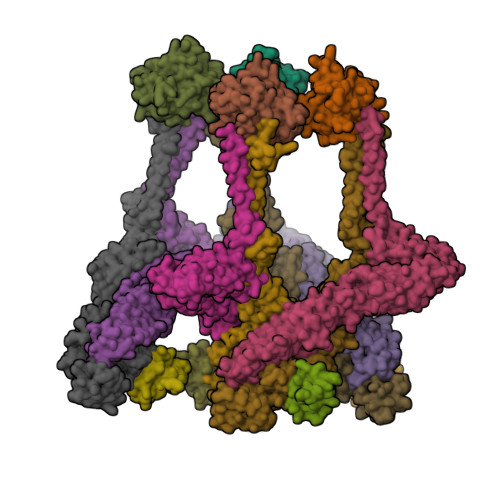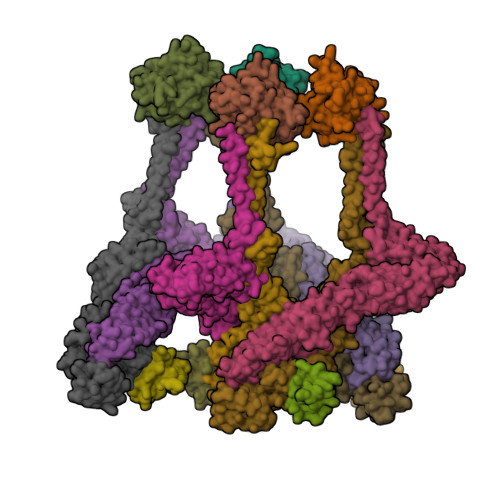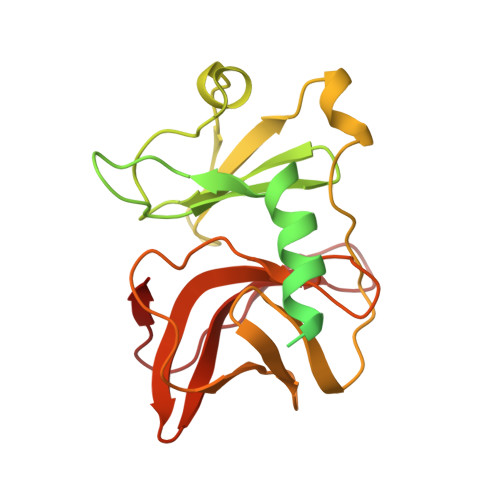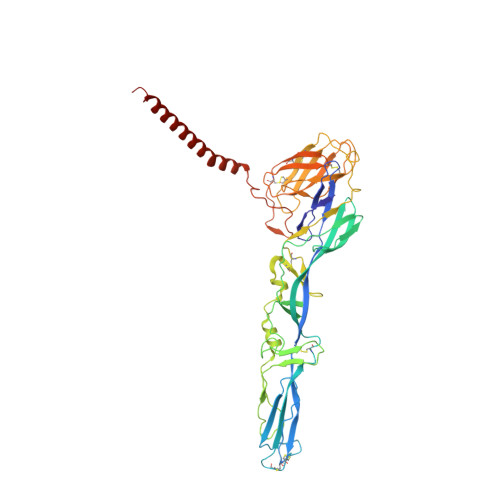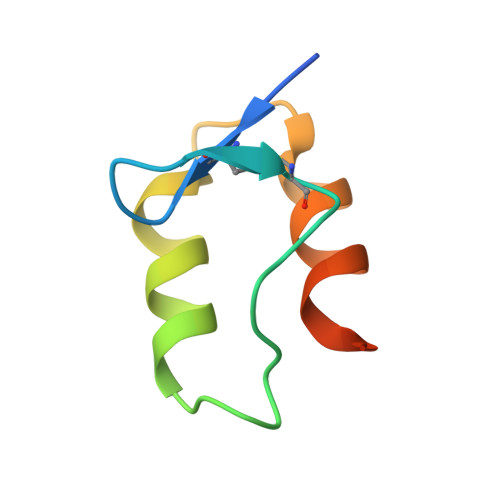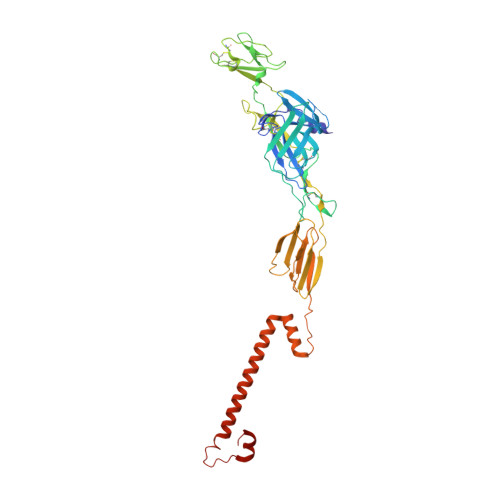Structure of Venezuelan equine encephalitis virus with its receptor LDLRAD3.
Ma, B., Huang, C., Ma, J., Xiang, Y., Zhang, X.(2021) Nature 598: 677-681
- PubMed: 34646021
- DOI: https://doi.org/10.1038/s41586-021-03909-1
- Primary Citation of Related Structures:
7FFE, 7FFF, 7FFL, 7FFN, 7FFO, 7FFQ - PubMed Abstract:
Venezuelan equine encephalitis virus (VEEV) is an enveloped RNA virus that causes encephalitis and potentially mortality in infected humans and equines 1 . At present, no vaccines or drugs are available that prevent or cure diseases caused by VEEV. Low-density lipoprotein receptor class A domain-containing 3 (LDLRAD3) was recently identified as a receptor for the entry of VEEV into host cells 2 . Here we present the cryo-electron microscopy structure of the LDLRAD3 extracellular domain 1 (LDLRAD3-D1) in complex with VEEV virus-like particles at a resolution of 3.0 Å. LDLRAD3-D1 has a cork-like structure and is inserted into clefts formed between adjacent VEEV E2-E1 heterodimers in the viral-surface trimer spikes through hydrophobic and polar contacts. Mutagenesis studies of LDLRAD3-D1 identified residues that are involved in the key interactions with VEEV. Of note, some of the LDLRAD3-D1 mutants showed a significantly increased binding affinity for VEEV, suggesting that LDLRAD3-D1 may serve as a potential scaffold for the development of inhibitors of VEEV entry. Our structures provide insights into alphavirus assembly and the binding of receptors to alphaviruses, which may guide the development of therapeutic countermeasures against alphaviruses.
Organizational Affiliation:
Beijing Advanced Innovation Center for Structural Biology, Beijing Frontier Research Center for Biological Structure, Center for Infectious Disease Research, Department of Basic Medical Sciences, School of Medicine, Tsinghua University, Beijing, P. R. China.








